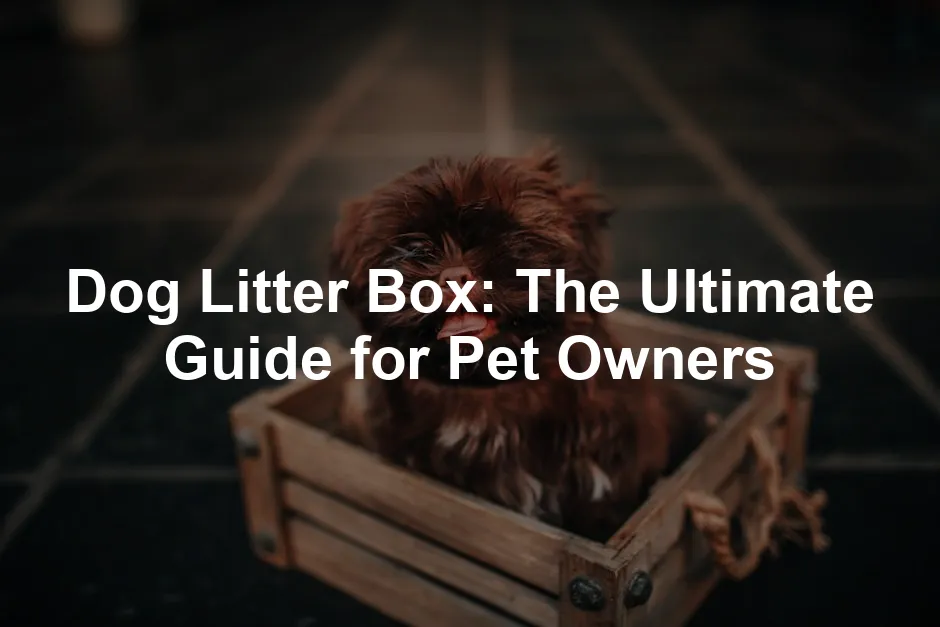Introduction
Dog litter boxes are becoming popular among pet owners. They offer a practical solution for indoor relief. This is especially helpful for small breeds or those in urban areas. With a litter box, you can maintain a clean home and simplify your dog’s potty routine.
Summary and Overview
The concept of dog litter boxes has evolved over time. Initially designed for puppies, they now cater to many adult dogs, too. As urban living becomes more common, these boxes help owners manage their pets’ bathroom needs. They are also beneficial for elderly or disabled pet owners who may struggle to take their dogs outside frequently. In this guide, we will cover the types of dog litter boxes, their benefits, and tips for effective training. Additionally, we’ll explore maintenance and alternative solutions for indoor potty needs.
Understanding Dog Litter Boxes
What is a Dog Litter Box?
A dog litter box is a designated area for your pet to relieve itself indoors. Unlike cat litter boxes, these are generally larger and designed with different materials. Dog litter can range from paper pellets to synthetic products, all tailored for canine use. Many boxes come equipped with features like high sides to prevent spills and easy-clean designs. Over recent years, sales of dog litter boxes have surged, indicating their growing acceptance among pet owners.
When choosing a litter box, consider your dog’s size and habits. Each dog’s needs are unique, and finding the right fit will enhance their comfort and ease of use. For a great option, check out the Trixie 23416 Welpentoilette Dog Litter Box. It’s a favorite among pet owners, offering comfort and practicality!
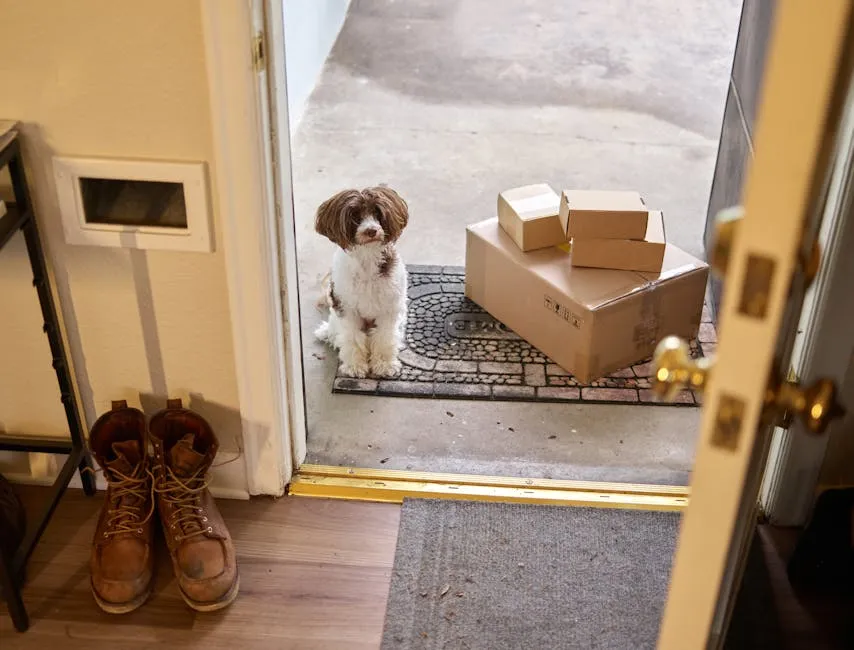
Benefits of Using a Dog Litter Box
Convenience for Pet Owners
Dog litter boxes are a game-changer for busy pet owners. Imagine returning home after a long day at work. Your dog needs to go, but the weather is terrible. A litter box saves you from braving the rain or snow.
Statistics show that about 25% of dog owners have switched to using litter boxes. This indoor solution offers peace of mind for those with hectic schedules. It also helps with late-night potty needs, eliminating the need for midnight walks. To make your life even easier, consider using AmazonBasics Pet Training Pads. They are a perfect addition to your dog’s potty training routine!
Living in urban areas can complicate outdoor potty breaks. With a dog litter box, you can provide a reliable alternative. Plus, it helps keep your home tidy and hygienic.
Have you tried a dog litter box? Share your experiences in the comments below!
Health and Hygiene Benefits
Using a dog litter box provides numerous health benefits for your furry friend. It can significantly reduce accidents in your home. When dogs have a designated spot, they are less likely to relieve themselves in unwanted areas.
Research indicates that over 30% of dogs have potty training accidents when their owners are away for long periods. A litter box can help mitigate this issue. It creates a cleaner living space for both you and your pet. To enhance cleanliness, consider adding a PetFusion Ultimate Dog Litter Box to your collection for an even better solution!
For pet owners, the hygiene aspect is equally important. Regular cleaning of the litter box ensures a sanitary environment. This practice minimizes odors and reduces the risk of health issues related to waste.
How do you maintain good hygiene for your pet? Evaluate your current practices and consider incorporating a dog litter box for added convenience.
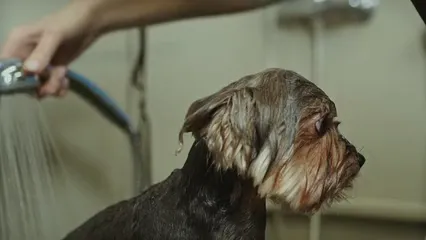
Choosing the Right Dog Litter Box
Factors to Consider
Choosing a dog litter box involves several key factors. First, consider the size. Your dog’s breed and size will dictate the box dimensions. A small breed may need a compact potty box, while larger dogs require more space.
Next, think about the design. Some boxes have high sides to prevent spills, while others are low for easy access. A covered box might offer privacy, but some dogs prefer an open design. For those looking for a stylish option, the PetSafe ScoopFree Ultra Self-Cleaning Litter Box can be an excellent choice!
Materials are also important. Look for durable, non-toxic options that are easy to clean. Common materials include plastic and absorbent fabrics.
To ensure comfort and usability, always check sizing guidelines for specific dog breeds. This helps you choose a box that fits your pet perfectly.

Popular Brands and Models
When it comes to popular dog litter box brands, several stand out. The Trixie 23416 Welpentoilette is a favorite, boasting a 4.1-star rating from over 4,000 reviews. Priced at around €13.14, it’s affordable and effective.
Another great option is the GD-15 Dog Toilet with Artificial Grass, rated 4.6 stars. It costs about €45.99 and is perfect for dogs that prefer a more natural feel. For those looking to keep their home odor-free, don’t forget to check out the Arm & Hammer Dog Litter Deodorizer to keep things fresh!
For those seeking a more sophisticated design, the Doggy Bathroom is highly recommended. Priced at €239, it features vertical pee pads, making it ideal for small breeds.
Each model has its pros and cons. Some are easier to clean, while others offer better odor control.
Sales figures indicate a growing market for these products. Many dog owners are switching to litter boxes for indoor convenience. If you’re looking for a good waste disposal solution, try out the PetFusion Dog Waste Disposal Bags for hassle-free cleanups!
Before making a purchase, consider reviewing comparisons and feedback from other pet owners. This will help you find the best option for your furry friend.

Training Your Dog to Use a Litter Box
Training your dog to use a litter box can be a game changer. It’s convenient, especially for busy pet owners. Plus, it helps keep your home clean. Here’s a simple step-by-step guide to get you started.
Step-by-Step Training Process
1. Choose the Right Spot
Place the litter box in a quiet, accessible area. Your dog should feel comfortable approaching it.
2. Introduce the Litter Box
Allow your dog to sniff around and explore the box. You can place a familiar scent, like a piece of their feces or an old pee pad inside, to encourage them to recognize it as their bathroom.
3. Establish a Routine
Take your dog to the litter box regularly. After meals, playtime, or naps are great times. Consistency is key in helping them learn.
4. Use Positive Reinforcement
Whenever your dog uses the box correctly, praise them! Offer a small treat as a reward. This will encourage them to repeat the behavior. You can also use a Dog Training Clicker to make your training sessions even more effective!
5. Monitor Progress
Keep an eye on your dog’s habits. If they go outside the box, gently redirect them back. Never scold them; it can create anxiety.
6. Gradually Transition
If your dog is used to going outside, initially train them outdoors. Gradually transition them to the litter box. This helps ease the adjustment.
7. Be Patient
Every dog is different. Some may catch on quickly, while others need more time. Stay patient and supportive throughout the process.
Statistics show that nearly 70% of dogs can successfully learn to use a litter box with consistent training. Techniques like positive reinforcement play a huge role in this success. You might be surprised by how quickly your pup adapts!
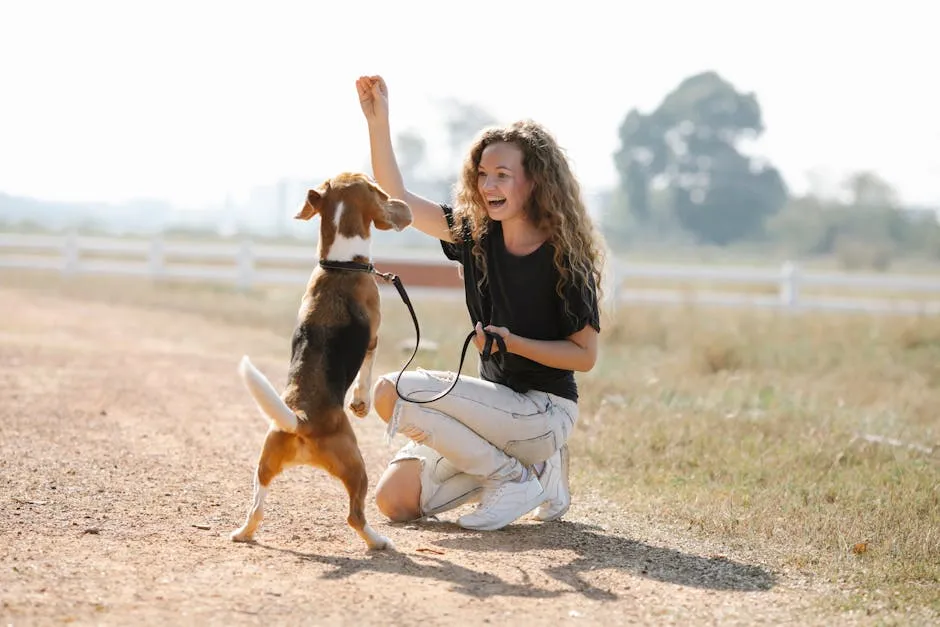
Positive reinforcement techniques are essential in training your dog effectively. Learn more about effective positive reinforcement techniques for stubborn dogs.
Document your training journey. Take notes on what works and what doesn’t. You might discover useful insights that can help others!
Common Challenges and Solutions
Training your dog to use a litter box isn’t always smooth sailing. Here are some common challenges and how to overcome them.
1. Refusal to Use the Box
If your dog avoids the box, ensure it’s clean and in a quiet area. Sometimes, dogs need a little more time to feel comfortable.
2. Accidents Outside the Box
Accidents happen. If your dog goes outside the box, clean it up without fuss. Revisit the positive reinforcement technique to encourage proper use.
3. Disinterest in the Litter
Some dogs may not like the litter material. Experiment with different types. Paper pellets or grass pads might be more appealing. For a great grass option, consider the PawHut Indoor Dog Potty Training Grass Pad!
4. Timing Issues
If your dog doesn’t go when you expect, try adjusting the schedule. Pay attention to their natural habits and adapt accordingly.
Research indicates that around 30% of dogs may struggle with litter box training initially. However, with the right approach and adjustments, most can overcome these issues.
For support, consider joining online forums. Engaging with others can provide shared experiences and helpful advice. You’re not alone in this journey!

Maintenance and Cleaning
Keeping the Litter Box Clean
Maintaining a clean dog litter box is essential for your pet’s health. Regular cleaning prevents odors and keeps the area hygienic. Aim to scoop waste daily, as this helps control smells and keeps your dog comfortable.
Use a high-quality scoop designed for pet waste. Look for products that are sturdy and easy to clean. For deeper cleaning, wash the box with mild soap and warm water weekly. Avoid harsh chemicals that could harm your dog.
Consider using absorbent litter specifically made for dogs. Paper pellets or wood-based litters are great options. They control odors well and are safe for your pet. Don’t forget to check out Nature’s Miracle Dog Training Pads for effective training!
To further manage odor, you can sprinkle a bit of baking soda in the box. This natural solution absorbs smells without being harmful.
Want a handy reference? Download our printable cleaning checklist to help you stay on top of your litter box maintenance routine. Keeping it clean is key to ensuring both you and your dog enjoy a healthy, happy home!
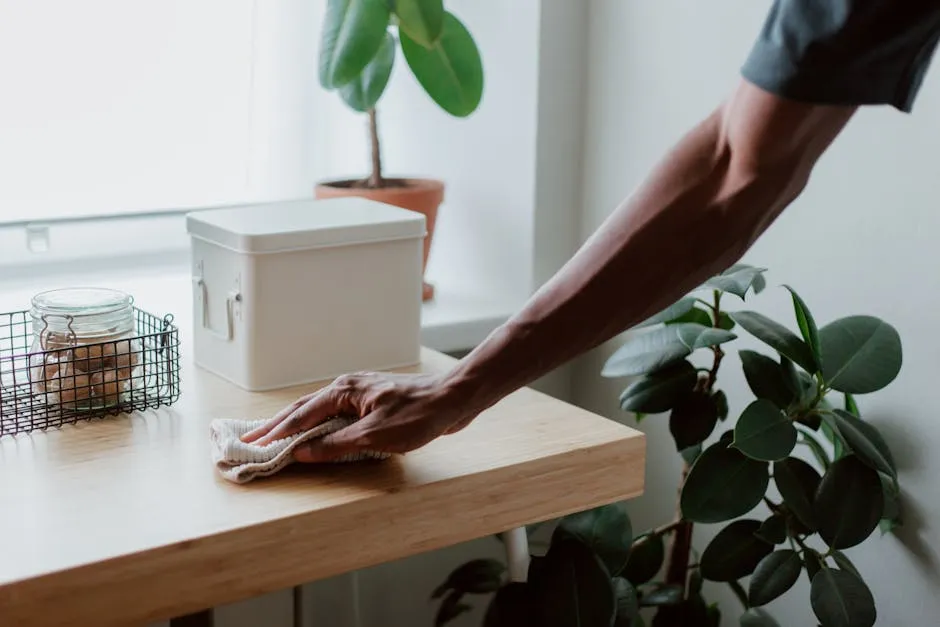
Alternatives to Dog Litter Boxes
Other Indoor Potty Solutions
If a dog litter box isn’t the right fit, there are several alternatives to consider. Pee pads are a popular choice, especially for puppies. They are absorbent and easy to use. Simply lay them in a consistent spot, and your dog will learn to go there. For added convenience, try the Paws Aboard Pet Potty Training Pads!
Grass pads are another option. These simulate outdoor grass and can be very appealing to dogs. They are eco-friendly and provide a natural experience for your pet. However, they require regular cleaning to keep them fresh.
Indoor pet toilets are also available. These often come with a tray and special absorbent material. They can be more convenient than traditional litter boxes, especially for larger breeds.
When comparing these options, think about your dog’s size and habits. Pee pads might work best for smaller breeds, while grass pads could suit larger dogs. Consider trying a few solutions to find what works best for your furry friend.
Feel free to explore various options based on what your pet needs. The right solution will make indoor potty breaks easier for both of you!
Conclusion
In summary, dog litter boxes offer convenience and hygiene for pet owners. They help maintain a clean living space and provide an indoor potty option when outdoor access is limited. By choosing the right litter box and keeping it clean, you enhance your dog’s quality of life. Indoor solutions like litter boxes, pee pads, and grass pads can simplify your pet care routine. Embrace these options to create a happier, healthier environment for you and your dog! If you’re looking for more tips and tricks, consider getting a Dog Wellness Book to guide you along the way!
Please let us know what you think about our content by leaving a comment down below!
Thank you for reading till here 🙂
All images from Pexels

